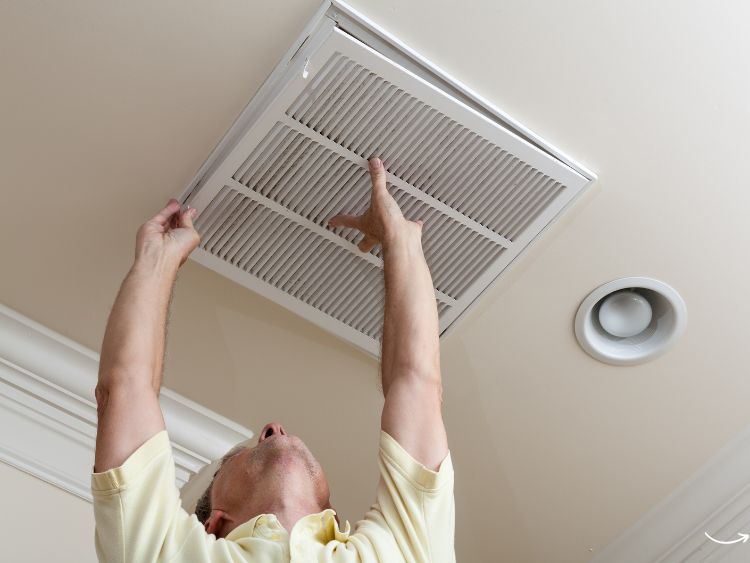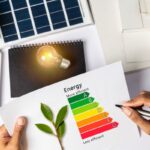You’re no stranger to the summer heat, right? When the sun’s blazing, and the air feels thick enough to swim through, there’s nothing quite like the blissful chill of air conditioning. But in the pursuit of that cool oasis indoors, you might have found yourself wondering if there’s a better way to maintain clean, fresh air in your home. That’s where UV air conditioning comes into play!
UV air conditioning isn’t just the latest buzzword in HVAC—it’s a smart, modern approach to tackling airborne contaminants, molds, and other nasty stuff that can wreak havoc on your system and health. Let’s break it down, explore how it works, and why you should seriously consider making it a part of your home’s air conditioning setup.
What Is UV Air Conditioning?
UV air conditioning leverages ultraviolet light to cleanse and purify the air moving through your HVAC system. Imagine those pesky microbes like mold, bacteria, and viruses throwing a party inside your ducts. Gross, right? UV light acts like a bouncer, kicking out unwanted guests by deactivating them.
The idea isn’t exactly new—hospitals have used UV light for sterilization for ages—but integrating it into air conditioning systems is a game-changer for your home’s air quality. Here’s how it works:
- UV Lamp Installation: A UV lamp is strategically installed inside your HVAC system, usually near the evaporator coil or in the ductwork.
- Light Emission: The lamp emits UV-C light, a specific wavelength known for its germicidal properties.
- Disinfection: As air circulates through your system, microorganisms that come into contact with the light are neutralized.
How Does UV Air Conditioning Work?
To understand how UV air conditioning works its magic, let’s delve into the science behind it. Ultraviolet (UV) light is divided into three main categories: UV-A, UV-B, and UV-C. It’s UV-C light that gets the job done here because it has the shortest wavelength (and thus the most energy) and can directly disrupt the DNA of microorganisms.
Here’s a more detailed step-by-step process:
- Evaporator Coil Sterilization:
- The evaporator coil is a prime spot for mold growth due to its cool, damp environment.
- A UV lamp near the coil constantly bathes it in germicidal UV-C light, preventing mold from taking root.
- Air Stream Disinfection:
- A second UV lamp might be placed in the ductwork.
- As air flows through, bacteria, viruses, and other airborne contaminants are exposed to the UV-C light and rendered harmless.
- Continual Purification:
- The UV lamps run continuously, maintaining a consistently sterile environment within your HVAC system.
- This constant exposure prevents microbial buildup and helps your system operate more efficiently.
Benefits of UV Air Conditioning
UV air conditioning isn’t just a fancy gadget; it’s a practical solution with a host of benefits:
- Improved Air Quality:
- Say goodbye to sneezing and wheezing! UV light kills airborne pathogens that can trigger allergies and respiratory issues.
- Reduced risk of illness due to fewer bacteria and viruses floating around.
- System Efficiency:
- Clean coils mean better heat exchange and less strain on your system.
- Fewer clogs in your ductwork translate to lower energy consumption.
- Odor Reduction:
- Tired of musty smells from your AC? UV lamps eliminate odor-causing bacteria and mold.
- Extended System Lifespan:
- A cleaner system is a longer-lasting system. Reduced microbial buildup means less wear and tear on your equipment.
Is UV Air Conditioning Safe?
Short answer: absolutely! UV air conditioning is safe for humans and pets because the UV-C light stays inside your HVAC system. However, direct exposure to UV-C light can be harmful, so always let a licensed professional handle installation and maintenance.
Safety Tips
- Professional Installation: Always have a trained HVAC technician install UV lamps.
- Regular Maintenance: Replace UV lamps as per manufacturer recommendations to maintain effectiveness.
- Proper Shielding: Ensure the UV lamps are properly shielded to prevent exposure.
Choosing the Right UV Air Conditioning System
If you’re convinced that UV air conditioning is right for you, here’s a quick guide to choosing the best system for your needs:
- System Compatibility:
- Not all UV lamps work with every HVAC system, so make sure your chosen lamp is compatible.
- Lamp Type:
- Coil Sterilization: Ideal if you’re primarily concerned about mold on the evaporator coil.
- Air Sterilization: Best for disinfecting the whole air stream.
- Installation Location:
- Consider where the lamps will be placed: in the ducts or near the coil.
- Wattage and Intensity:
- Higher wattage lamps produce more intense UV-C light, offering better disinfection.
- Ease of Maintenance:
- Look for systems that allow easy access to the lamps for replacement.
Installation Process
Thinking of rolling up your sleeves and DIY-ing your UV air conditioning setup? Hold your horses! Here’s a general idea of what installation involves, but remember, it’s best left to the pros:
- Assessment and Planning:
- The technician assesses your system and decides on the best lamp type and placement.
- Installation:
- The UV lamp is installed in the designated location.
- Proper wiring and shielding are set up to ensure safety.
- Testing and Calibration:
- The technician checks the lamp’s operation and adjusts the settings for optimal disinfection.
Maintenance of UV Air Conditioning Systems
Keeping your UV air conditioning system in tip-top shape isn’t too demanding. Follow these steps:
- Lamp Replacement:
- UV lamps typically need replacement every 12-18 months.
- System Inspection:
- Schedule a professional inspection annually to ensure everything’s running smoothly.
- Coil Cleaning:
- Despite UV lamps, a thorough coil cleaning every couple of years can help.
FAQs About UV Air Conditioning
Q: Does UV air conditioning remove dust and allergens?
A: UV lamps can kill microorganisms like bacteria and mold but won’t remove dust and other non-living particles. A quality air filter works well in tandem with UV lamps.
Q: Can UV light damage my HVAC system?
A: UV-C light is safe for your system when properly installed and shielded. Regular maintenance ensures no unintended exposure.
Q: Will UV lamps increase my electricity bill?
A: The energy consumption of UV lamps is minimal, and any slight increase is often offset by the improved efficiency of a cleaner HVAC system.
Q: Do UV lamps produce ozone?
A: No, UV-C lamps designed for HVAC systems do not produce ozone.
Q: Can I install UV lamps myself?
A: It’s best to leave it to a licensed HVAC technician to ensure proper installation and safety.
Conclusion
UV air conditioning is more than just a high-tech gimmick—it’s a practical way to elevate your indoor air quality and keep your HVAC system humming along efficiently. By zapping microbes with germicidal UV-C light, you’re ensuring your family breathes easier while extending the lifespan of your AC.
If you’re ready to take the plunge into cleaner, fresher air, reach out to a trusted HVAC professional today. And remember, breathe easy knowing your UV air conditioning system has your back!




